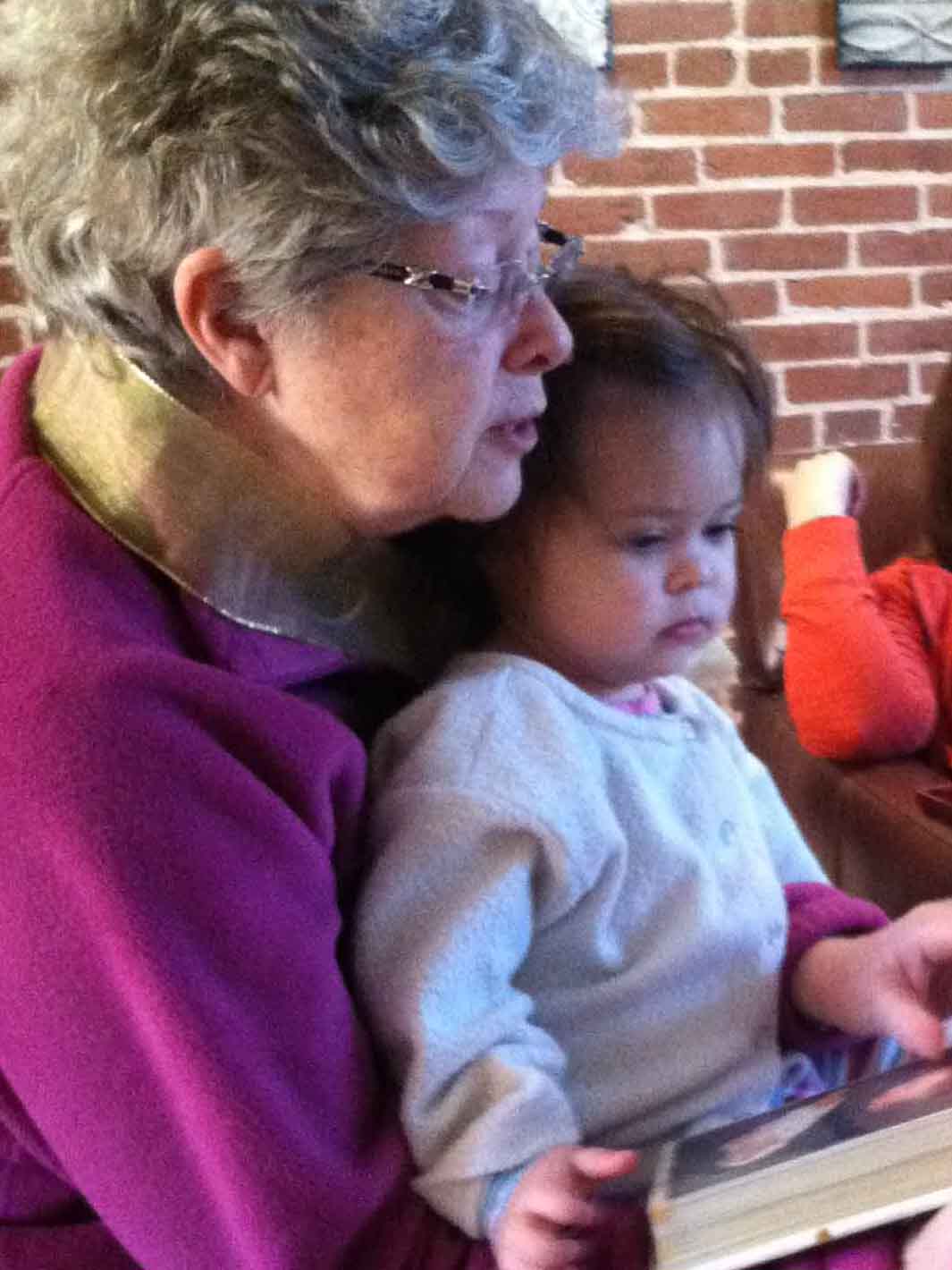From concept to sketches to prototype
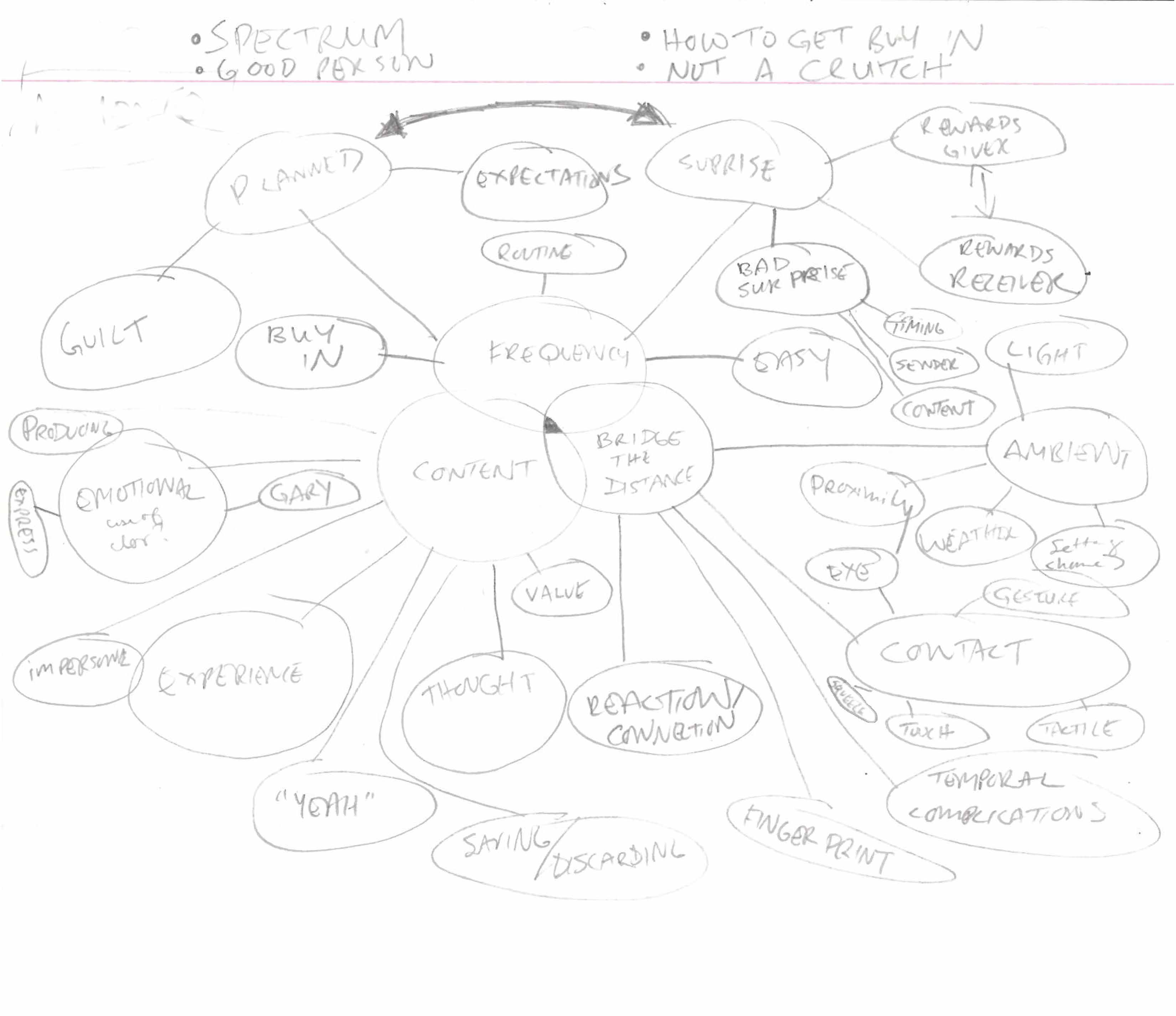
We brainstormed and mapped out our ideas and feedback from classmates and users. This artifact guided us as our idea evolved.
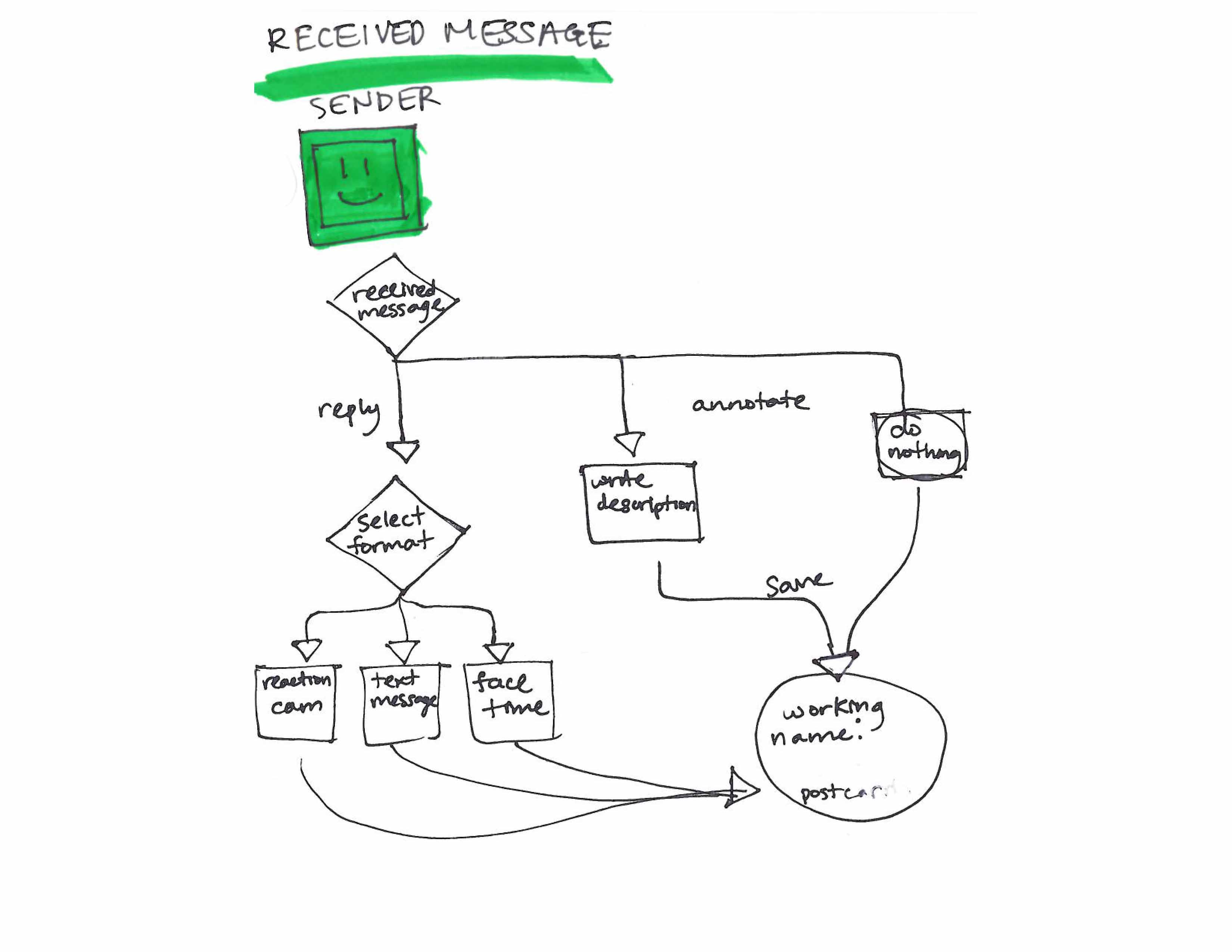
We drew flows to track and analyze how a user would experience the design.
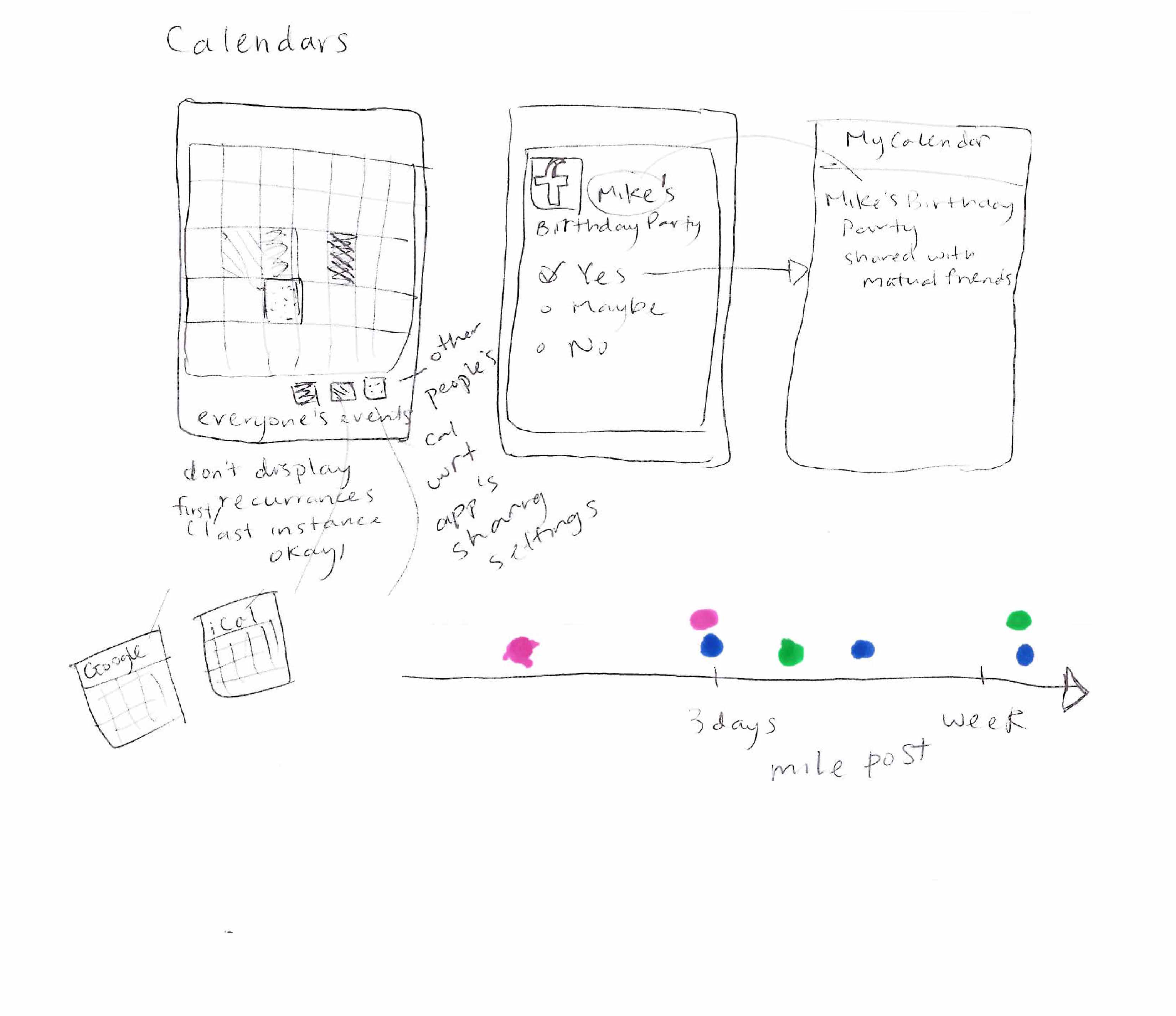
We explored different ways families might communicate about their lives, like shared calendars.
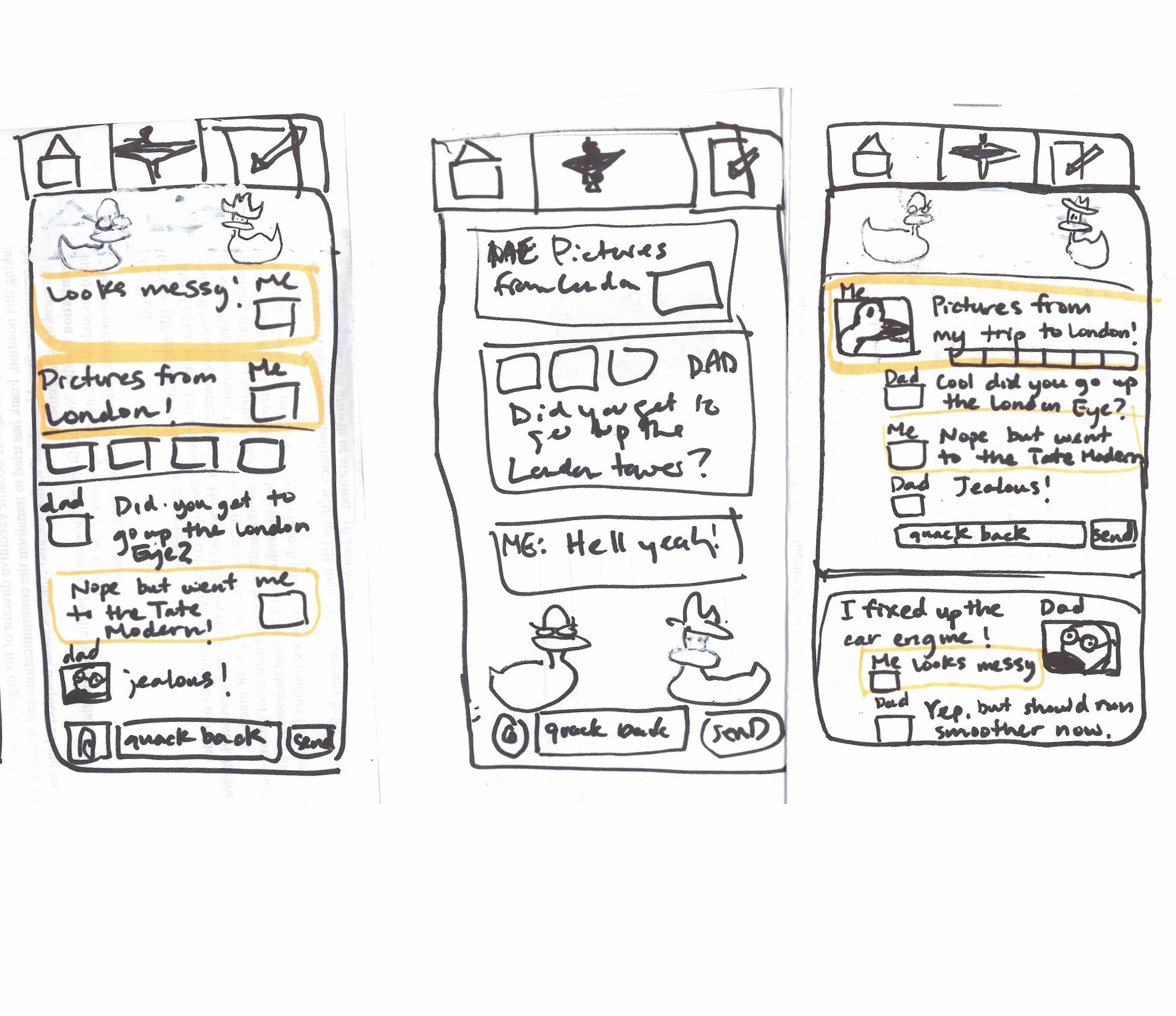
We shifted focus to how to disrupt families' communication patterns. This sketch came just as we pivoted towards the duck metaphor.
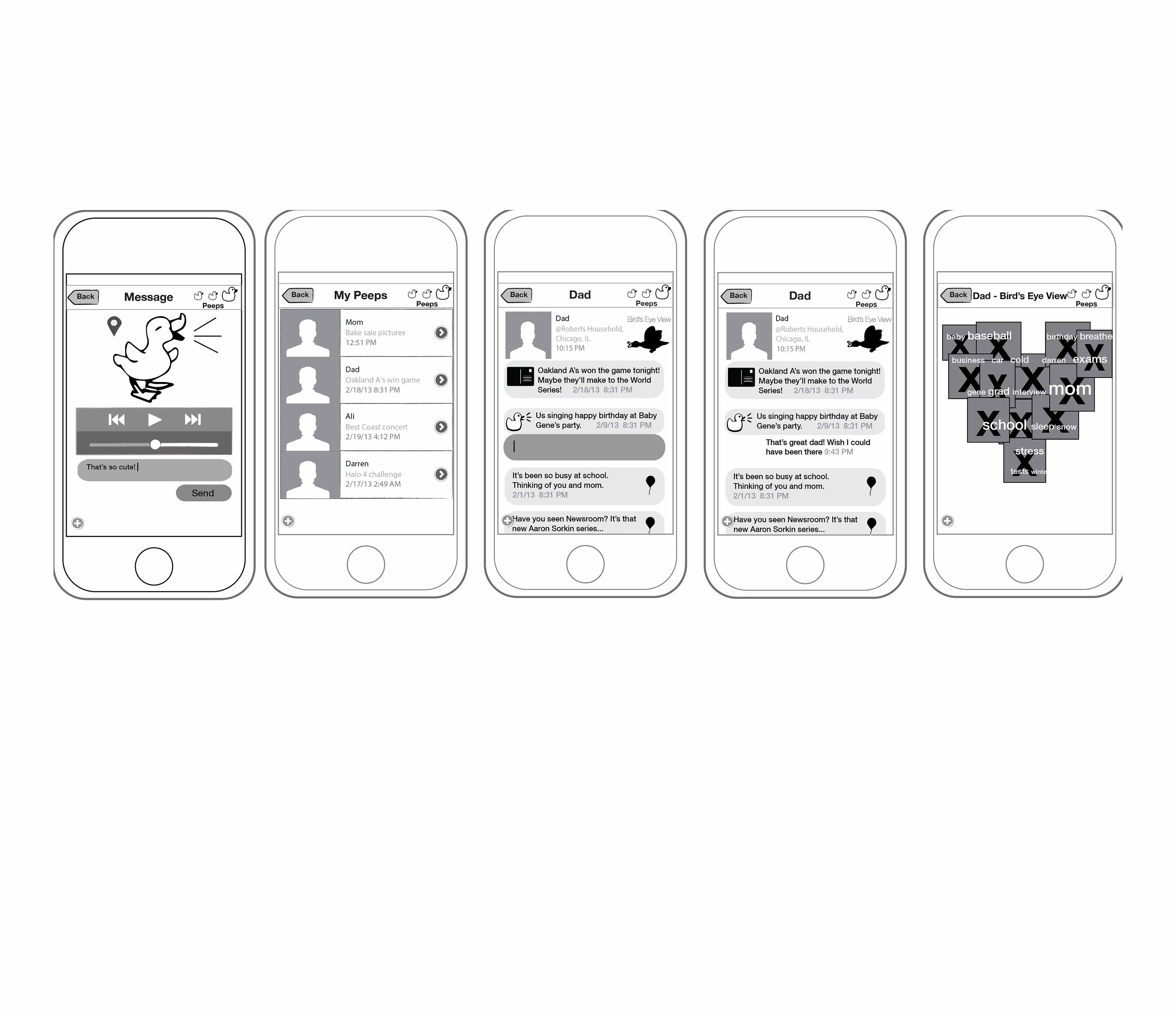
We pushed our ideas with each level of fidelity. These wireframes include our first attempt at a word cloud of topcis two family members most frequently discussed.

